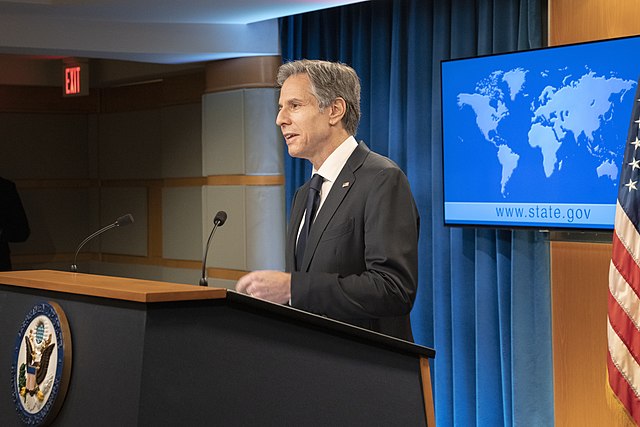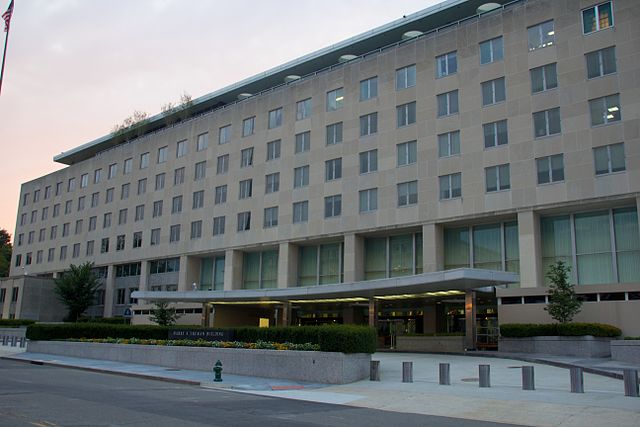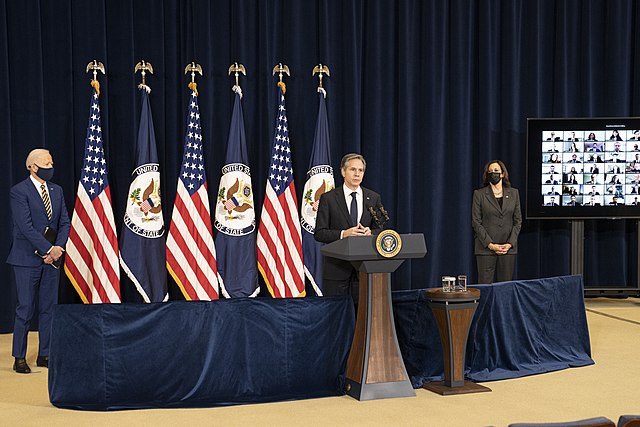Timeline of United States diplomatic history
The diplomatic history of the United States oscillated among three positions: isolation from diplomatic entanglements of other nations ; alliances with European and other military partners; and unilateralism, or operating on its own sovereign policy decisions. The US always was large in terms of area, but its population was small, only 4 million in 1790. Population growth was rapid, reaching 7.2 million in 1810, 32 million in 1860, 76 million in 1900, 132 million in 1940, and 316 million in 2013. Economic growth in terms of overall GDP was even faster. However, the nation's military strength was quite limited in peacetime before 1940.
HMS Leopard (right) mauls the USS Chesapeake in 1807
New York Times April 3, 1917
United States Department of State
The United States Department of State (DOS), or simply the State Department, is an executive department of the U.S. federal government responsible for the country's foreign policy and relations. Equivalent to the ministry of foreign affairs of other nations, its primary duties are advising the U.S. president on international relations, administering diplomatic missions, negotiating international treaties and agreements, and representing the U.S. at the United Nations. The department is headquartered in the Harry S Truman Building, a few blocks from the White House, in the Foggy Bottom neighborhood of Washington, D.C.; "Foggy Bottom" is thus sometimes used as a metonym.
Department of State headquarters
Secretary of State Antony Blinken delivers remarks to the media
Harry S. Truman Building (formerly Main State Building), headquarters of the U.S. Department of State since May 1947.
Secretary of State Antony Blinken delivers remarks with President Joe Biden and Vice President Kamala Harris at the State Department headquarters, February 2021






